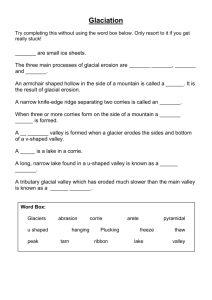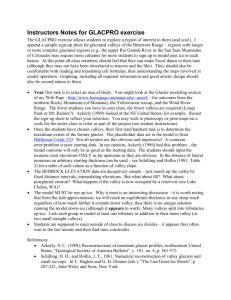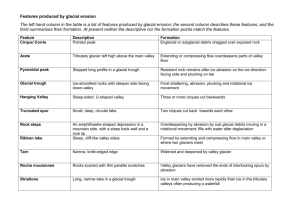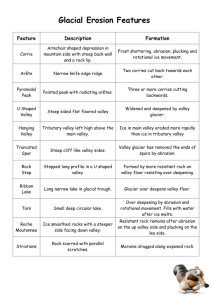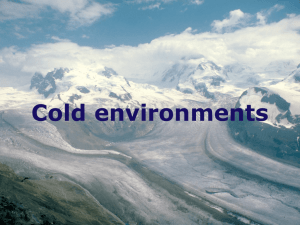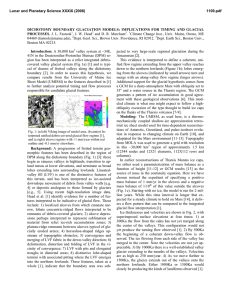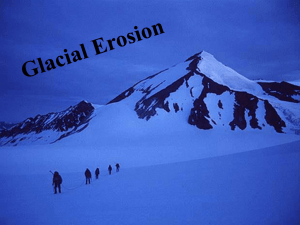Formation of a glacial trough
advertisement
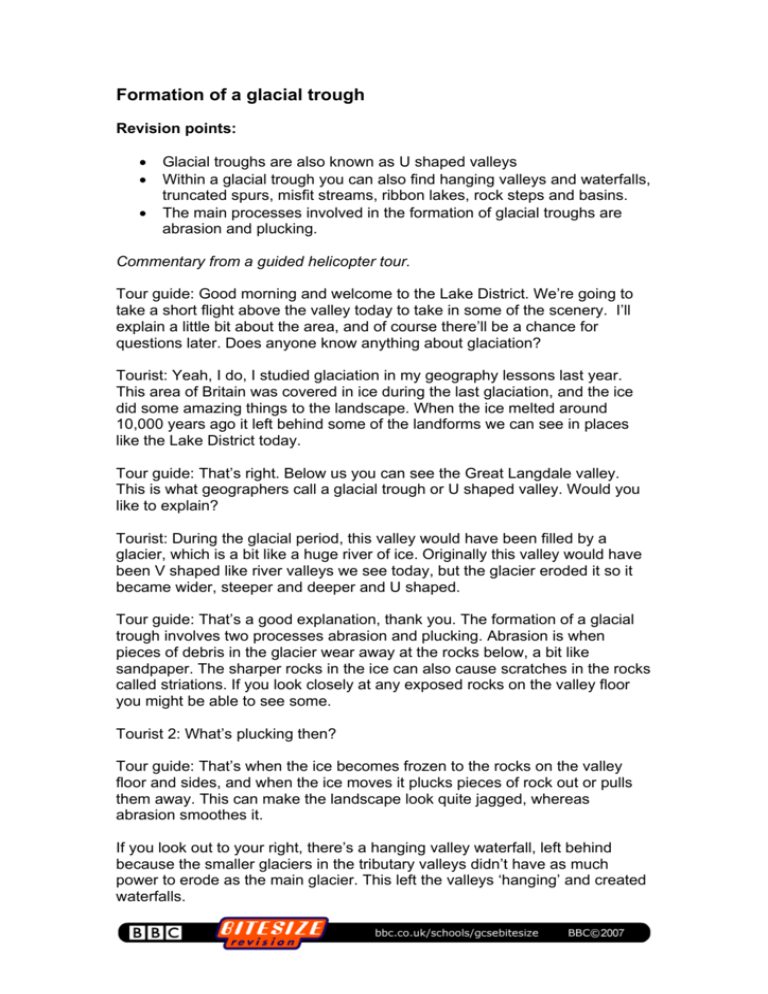
Formation of a glacial trough Revision points: • • • Glacial troughs are also known as U shaped valleys Within a glacial trough you can also find hanging valleys and waterfalls, truncated spurs, misfit streams, ribbon lakes, rock steps and basins. The main processes involved in the formation of glacial troughs are abrasion and plucking. Commentary from a guided helicopter tour. Tour guide: Good morning and welcome to the Lake District. We’re going to take a short flight above the valley today to take in some of the scenery. I’ll explain a little bit about the area, and of course there’ll be a chance for questions later. Does anyone know anything about glaciation? Tourist: Yeah, I do, I studied glaciation in my geography lessons last year. This area of Britain was covered in ice during the last glaciation, and the ice did some amazing things to the landscape. When the ice melted around 10,000 years ago it left behind some of the landforms we can see in places like the Lake District today. Tour guide: That’s right. Below us you can see the Great Langdale valley. This is what geographers call a glacial trough or U shaped valley. Would you like to explain? Tourist: During the glacial period, this valley would have been filled by a glacier, which is a bit like a huge river of ice. Originally this valley would have been V shaped like river valleys we see today, but the glacier eroded it so it became wider, steeper and deeper and U shaped. Tour guide: That’s a good explanation, thank you. The formation of a glacial trough involves two processes abrasion and plucking. Abrasion is when pieces of debris in the glacier wear away at the rocks below, a bit like sandpaper. The sharper rocks in the ice can also cause scratches in the rocks called striations. If you look closely at any exposed rocks on the valley floor you might be able to see some. Tourist 2: What’s plucking then? Tour guide: That’s when the ice becomes frozen to the rocks on the valley floor and sides, and when the ice moves it plucks pieces of rock out or pulls them away. This can make the landscape look quite jagged, whereas abrasion smoothes it. If you look out to your right, there’s a hanging valley waterfall, left behind because the smaller glaciers in the tributary valleys didn’t have as much power to erode as the main glacier. This left the valleys ‘hanging’ and created waterfalls. Over there you can also see the truncated spurs. These are left when the powerful glacier in the main valley cuts the ends off the interlocking spurs that the river used to wind around. That’s why the river looks so odd. The small stream on a wide flat valley floor is called a misfit stream. The one misfit stream we can see there is called Great Langdale Beck. Right then, as we fly down the valley we’ll approach Lake Windermere, this is an example of a ribbon lake. Ribbon lakes were formed when ice eroded the valley floor a little deeper than the surrounding area to form a rock basin. After the glaciers retreated they left an ideal place for a lake. That concludes our tour ladies and gentlemen, take care as you leave the helicopter and I hope you enjoy the rest of your stay.



